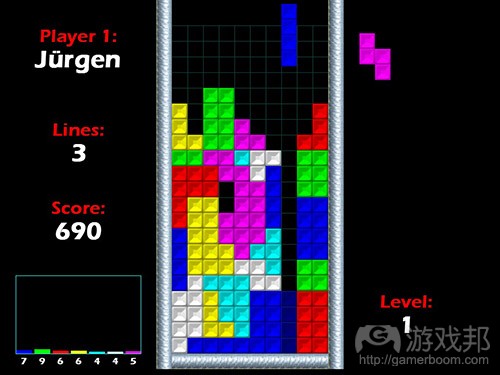驳Tadhg Kelly“游戏设计七大常量”理论
作者:Curtiss Murphy
“游戏设计七大常量”听起来是个挺有吸引力的标题,也因此抓住了我的注意力。不幸的是,当我看完全文,却发现这不过是一些半生不熟的理论汇总,拼凑了诸如自然主义、紧迫感和不完善等毫无用处的花哨词。我认为这些理论不但听起来与我作为设计师的职业毫不相干,并且极其缺乏可操作性!
我热爱游戏,热爱我们的行业,我也热爱这种可以接触无数人生活的力量!作为个人和团队,我们完成了惊人的作品。我们了解游戏,了解设计,但年轻而心怀抱负的开发者,那些有朝一日将成为我们行业新星的群体却只能独自在这条路上摸索。这不免令人尴尬。
现在我想在此分享我自己的游戏设计法则:
*流——这是我希望自己的玩家所经历的体验。它含有4个简单的要素:a)清晰的目标;b)即时反馈;c)没有干扰;d)平衡的挑战。
*简单性-—–Csikszentmihalyi并没有提出关于简单性的理论,所以我花了数年时间配制了自己的这个秘方。它包括a)核心;b)有限的选择;c)直观;d)玩家的视角。我相当确信如果我将模拟和游戏置于一条线段的两个相反的极端,简单性就是这两者之间的界线。不过说实话,我目前仍在寻找比这四者更好的简单性配方。
*兴趣曲线-—–Jesse Schell在自己关于Circus Juggling的故事中完美演绎了这一点。他将其解释为一种不断上升的情感高峰系列,最初是以富有吸引力的介绍来切入,一路伴随起伏和波折,最后以一声巨响快速终止。《战神》在这方面的表现堪称完美。
*选择悖论-—–“游戏是一系列有趣而有意义的选择”这话不假,但常言道“太多味道也会坏了一锅好汤”。我已经在以上的简单性配方中添加了有限的选择,等我想出一个更好的配方,我相似选择悖论本身也会占有一席之地。
*方形、圆形和三角形-—–Chris Solarski将古典艺术与现代音乐和游戏联系起来的观点曾令我大开眼界。从那时起,我就花了不少时间分析歌曲、电影和游戏,只是为了确认该模式的确出现在我所热爱的一切事物中。简单、普遍而具有可操作性。
*神秘盒子——盒子里面有什么?是像素艺术还是什么都没有,这一点并不重要,只要这盒子让我的玩家产生好奇心即可。魔术师就很擅长这一招,电视节目也用这一招,不过我认为Peter Molyneux的游戏更好地抓住了其本质。
*故事——无论我怎么看待《俄罗斯方块》,都得承认它没有故事,但故事仍然是我认为值得挖掘的一个基本常量。作为一名内向的程序员,我在发现Peter Guber的三部分秘方之前可吃了不少苦头,这三点分别是a)从一个问题/挑战入手;b)显示情感纠结;c)以一个刺激性的总结收尾(最好进行一些调整)。
这些就是我的设计“常量”,它们具有通俗性、可衡量性和可操作性。(本文为游戏邦/gamerboom.com编译,拒绝任何不保留版权的转载,如需转载请联系:游戏邦)
Is This The Best We’ve Got? A Critique Of Tech Crunch’s Game Design
by Curtiss Murphy
“Seven Constants of Game Design” is a catchy title, right? It grabbed my attention as I browsed my in-box spam. Unfortunately, when I read the article, I found a compilation of half-baked toy theories; useless buzz-words like Naturalism, Urgency, and Imperfection. Not only do those not sound relevant to what I do as a designer, they’re not even remotely actionable!
I love games, I love our industry, and I love the power we have to touch the lives of millions! And frankly, it fills me with nerd-rage that so many wonderfully talented and creative people cannot agree on the basic tenants of game design.
The information is out there. As individuals and as teams, we’ve done amazing work. We know games, we know design, and yet, the young and aspiring devs, who will one day be the stars of our industry are left to figure it out themselves. It’s kind of embarrassing.
Now that I’ve had time to reflect on Tanya Short’s challenge for us to “Share Our Crayons”, I’ve given myself time to let my nerd-rage subside. In that spirit, I’d like to share my game-design crayon box.
Flow – It’s a dream recipe for what I hope my players experience. Four simple ingredients: a) Clear Goals, b) Immediate Feedback, c) No Distractions, and d) A Balanced Challenge. ‘Flow’ is right next to ‘Shipping’ in terms of things my games must have.
Simplicity – There’s no Csikszentmihalyi for Simplicity, so I’ve spent years concocting a primitive recipe of my own. It includes: a) Core, b) Limited choice, c) Intuitive, and d) Player’s perspective. I’m pretty sure if I put simulations and games on opposite ends of a line, simplicity would be the distinction between them. Though, in truth, I’m still looking for a recipe that’s better than CLIP.
Interest Curve – Jesse Schell captured this perfectly in his story of Circus Juggling. He explains it as a rising series of emotional peaks that begins with a catchy intro, wiggles it’s way up and down as it moves right, and ends quickly after a last big-bang. God of War nailed this perfectly!
Paradox of Choice – It’s true that “Games are a series of interesting and meaningful choices” and yet the old adage is also true: too much spice spoils the stew. I already added limit choices to my simplicity recipe, and yet, once I figure out a better recipe, I’m pretty sure the paradox of choice warrants a spot, all by itself.
Squares, Circles, and Triangles – Chris Solarski blew my mind when he connected classic art to modern music and finally to games. Since then, I’ve spent hours analyzing songs, movies, and games, only to confirm that the pattern really does show up in almost EVERTHING I love. Simple, universal, actionable.
Mystery Box – What’s in the box? It doesn’t matter whether it’s pixel art, or nothing at all, as long as there’s a box for my player’s to wonder about. Magician’s use it, and television shows use it, though I think Peter Molyneux’s game captured it’s essence best.
Story – No matter how I’ve looked at it, Tetris does NOT have a story, and still, story was a fundamental constant I had to grok. As a programmer and introvert, I struggled until I discovered Peter Guber’s three part recipe: a) Start with a Question/Challenge; b) Show the Emotional Struggle; c) End with a Galvanizing conclusion (preferably with a twist).
Those are my crayons; my ‘constants’ if you like. I like them because they’re teachable, measurable, and actionable. (source:gamasutra)
上一篇:分析游戏销售采用章节模式的优势








































 闽公网安备35020302001549号
闽公网安备35020302001549号